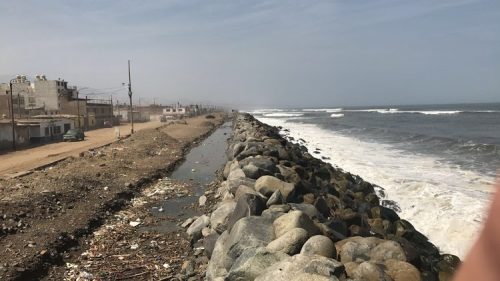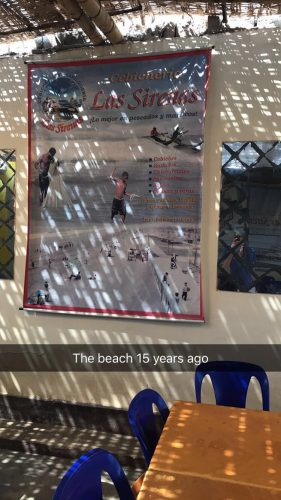
This summer I am volunteering at an organization, WindAid, that is building wind turbines to bring electricity to rural villages in Peru. The mission statement of WindAid is “Educational experiences empowering people to create a sustainable world.” This clearly shows their two purposes of helping people while doing it in a sustainable way. Going into this experience I expected the desire to do this work sustainably to be just the noble goal of the NGO, WindAid. I hadn’t realized that, culturally, Peruvians cared a lot about the environment. That these two goals were on more of an equal ground than I expected. I expected things to be similar to the US where everyone would claim to care about the environment, but in actuality no one really prioritized being conscientious besides the occasional sustainable organization. I expected the same to be true in Peru, with WindAid being the exception with their sustainable mission statement.
People’s long term affects on the Environment
Peru is one of the countries that has been directly affected by global warming the most. We saw a very vivid example of this on our first day in Trujillo when we went to the coast. We drove down to Buenos Aires to see a pretty run down area, destroyed by flooding, only protected from the ocean by a large rock wall.

This area used to be a thriving beach town only 15 years ago. But in that time, due to the rising sea level and changing ocean currents, the beach is completely gone and a wall is necessary to keep the town from being destroyed. Directly next to the rock wall there was a restaurant that housed this picture of the booming beach before it was destroyed.
The woman who owned the restaurant told us that after losing all tourism to the beach everyone was trying to leave that town. That left her with a struggling business and not enough money to move somewhere else.
In addition to this, there are several glaciers in Peru that have melted receded quite a bit due to global warming. I’ll have more to say on that when I visit a glacier next weekend to preform maintenance on the highest wind turbine in the world: http://windaidinstitute.org/light-up-a-life/peru-electrification-programs/pasto-ruri-guinness-world-record/.
People’s immediate affects on the Environment
I was lucky enough to arrive here just at end of another long term volunteer’s stay. This means I got to see the project that he’d spent the whole time working on. He had built a machine the melt down various plastics and form them into the filaments used in 3D printers: https://twitter.com/WindAid/status/868154255345156096. This is extremely useful because WindAid does use a 3D printer for some parts of the turbine, there is a trash problem in the areas around Trujillo, and it is, in general, a good sustainable practice. It was very cool to see native Peruvians coming into the house to get a presentation about how this machine worked. People were interested in finding a way to reduce their trash problem.
And this trash problem is pretty evident for anyone visiting Trujillo. In the half an hour drive from the airport to the main city you drive through the ruins of an ancient Peruvian city. But the view of these ruins is obscured by trash, sometimes on fire, along side the roads all the way up to the city.
People are Forced to Care for the Environment
Peruvian people have to live with their immediate and long term affects on the environment. This close proximity fosters a greater desire to do things in a more sustainable way. I guess our distance from the actual problems caused by our actions makes it hard for us to care about being sustainable in the US. But here in Peru going green is more than a lofty goal. It is something more people here wish that they could obtain.
